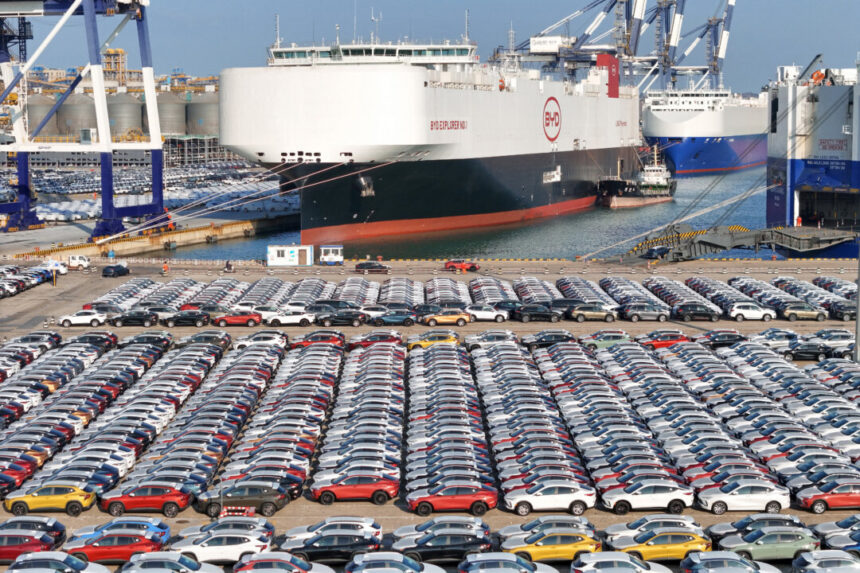Commentary
U.S. Treasury Secretary
Janet Yellen said on June 13 that China has “overconcentrated supply chains” that threaten U.S. jobs and investment in green energy. This follows her comments while in
China that underscored “the global economic consequences of China’s industrial overcapacity.”
The Chinese regime’s aggressive trade policies, including subsidies and dumping of products below the cost of production, “may interfere significantly with our efforts to build a healthy economic relationship,” Yellen said.
Is the claim of Chinese “overcapacity” in green investment, including electric vehicles (EVs), a form of trade war propaganda, real, or a bit of both? Could singling out China in this way be a result of Beijing’s aggression across not only economic but also military and diplomatic matters? Is it a cudgel used against China’s own trade barriers?
Strategic dumping destroys international competition with artificially low prices, so later prices can be pumped up to monopolistic levels. Overcapacity is a factory utilization rate of below
80 percent that leads to greater production, even at below production cost. It is typically caused by government
subsidies and creates more industrial output than is justified by market conditions—something one would expect Democrats to welcome in the case of green tech. However, overcapacity typically lowers prices for exports with the effect of closing foreign factories, including in the United States.
China achieved what has been called “hyper-industrialization” by not only decades of government support that led to U.S. deindustrialization but also the accompanying
sacrifice of Chinese citizens’ well-being. According to Lingling Wei at The Wall Street Journal, underfunding Chinese social services led to consumer fear of spending.
The Chinese Communist Party (CCP) risked the resulting savings for China’s over-industrialization and rapid militarization. Some subsidized industries, like steel production, were ultimately diverted to China’s military buildup. This simultaneously weakened U.S. and allied relative power and independent industrial capacity, making us vulnerable in case of emergency, like a pandemic or war.
U.S. and European politicians now understand and are determined to avoid a repeat in the next industrial wave, including electric vehicles. The CCP wants the same—as much as possible of the billions of dollars of profits and jobs that EVs produce. To get a jump on the competition, the
United States and
China subsidized EV development starting in 2009, followed by
Europe since at least 2021.
While the West had a mature auto manufacturing base from which to build, Chinese automakers had inexpensive skilled labor and an alleged willingness to
steal what intellectual property they needed. In self-defense, the
Trump administration in 2018 imposed general tariffs of 25 percent on most Chinese goods. The
Biden administration imposed a tariff of 100 percent on Chinese EVs in May.
Planned
European tariffs announced on June 12 are relatively low, ranging from 17 percent to 38 percent. They would likely have to be at least
50 percent to bar Chinese EVs from Europe. The new EU tariffs are thus more of a
warning to encourage Beijing to shore more manufacturing in Europe if it wants tariff-free access.
European carmakers could suffer from Chinese manufacturing in Europe, though they might also suffer from higher EU tariffs if the CCP retaliates. That explains why European carmakers oppose the tariffs.
Beijing has
countered claims of its overcapacity by charging that Europe also has an
“overcapacity” in
pork, which is under an anti-dumping probe as of June 17. The CCP says that claims of Chinese overcapacity are selective and that other countries also subsidize their EVs. The regime implies that the concept of “overcapacity” is meaningless in a world of international trade in which all countries—such as Taiwan, which subsidized its semiconductor development—have an “overcapacity” Please provide me with a rephrased version of the text.
Source link







